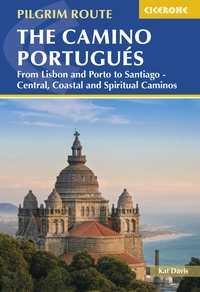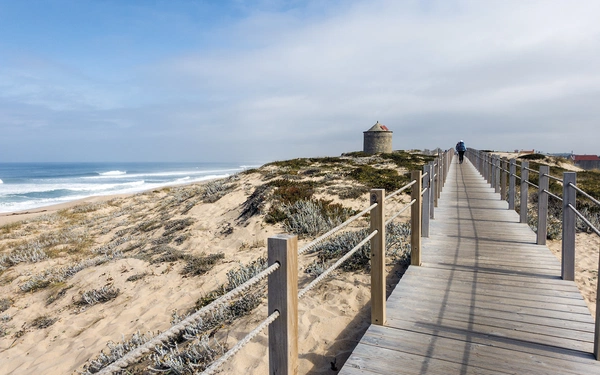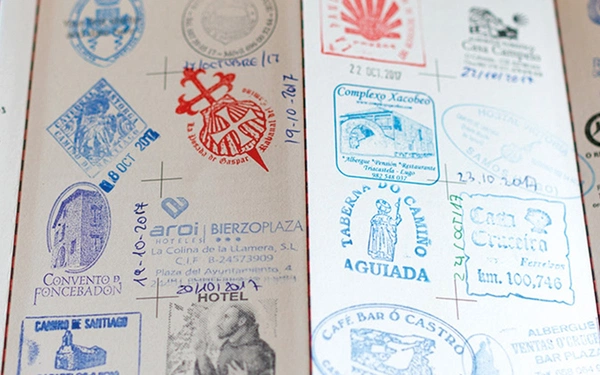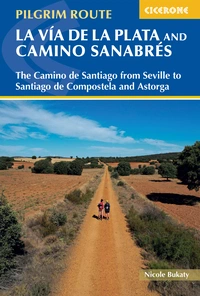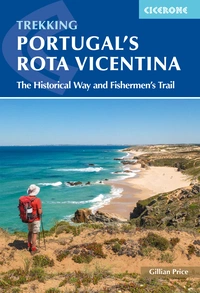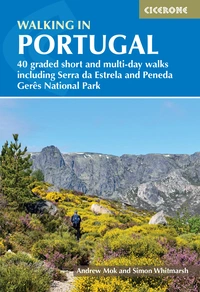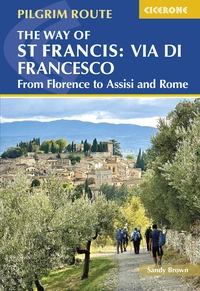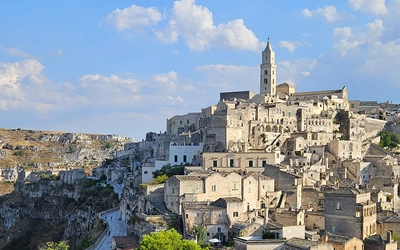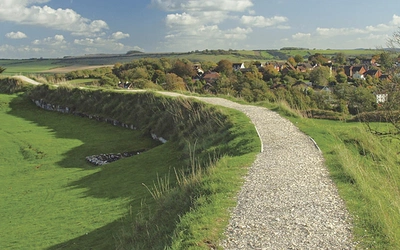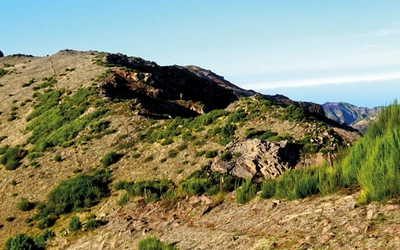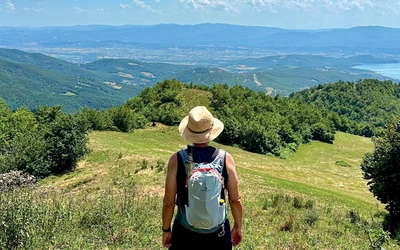An Introduction to the Camino Portugués (Portuguese Way)
Starting in Portugal’s capital, Lisbon, and ending in Santiago de Compostela in Spain, the 620km Portuguese Camino – ‘Caminho Português’ in Portuguese and ‘Camino Portugués’ in Spanish – has attracted pilgrims for many centuries. The route boasts stunning coastal views, vibrant cities, wonderful trails and friendly locals to keep you company along the way. Find out more about this incredible pilgrimage below.
The Camino Portugues
From Lisbon and Porto to Santiago - Central, Coastal and Spiritual Caminos
£18.95
The Portuguese Way (Camino Portugues) is a 620km long-distance route from Portugal's capital Lisbon to Santiago de Compostela in Spain. This guide splits the route into 25 stages, with two coastal options, and takes in historic and religious sites and stunning scenery. With information on preparation, planning and accommodation.
More information
How long is the Camino Portugués?
The Camino Portugués covers a distance of 620km.
Where does it start and finish?
The main Camino Portugues (Portuguese Way) starts in Lisbon in Portugal and ends in Santiago de Compostela in Spain. The Central Camino starts from Lisbon, Porto or Tui, the Coastal Camino between Porto and Redondela, and the Spiritual Variant route from Pontevedra to Padrón. The classic Camino Portugués is an epic pilgrim trail taking you from Lisbon all the way to the historic centre of Santiago de Compostela; while the Portuguese Coastal Camino is a scenic alternative route, starting in picturesque Porto.
How long does it take to walk?
The full 620km route from Lisbon can be completed in around a month.
Is the Camino Portugués the same as the Camino de Santiago?
The Camino Portugués (Portuguese Way) is one of several routes of the Camino de Santiago, all of which lead to the Cathedral of Santiago de Compostela. The Camino de Santiago refers to the entire network of pilgrimage routes across Europe, while the Camino Portugués specifically starts in Portugal, with popular starting points in Lisbon and Porto, and heads north into Spain toward Santiago.
The Camino de Santiago and all its routes are today internationally recognised as one of the greatest historic walking trails of the world.
When is the best time of year to walk the Camino Portugués?
April to October is the most popular time, with peak numbers in July and August, which are also the hottest months. Spring brings wildflowers and comfortable walking temperatures but you may also experience days of rain. In summer (with temperatures exceeding 30˚C), coastal accommodation is extremely busy and requires advanced booking. In winter many albergues and some coastal hotels close, so plan ahead and expect rain. Although typically drier in the summer months, Galicia is known for its wet weather, so pack a rain jacket or poncho no matter the time of year.
What food and drink options are available along the way?
If you are a seafood lover, this is the perfect Camino route. Northern Portugal is famous for its Bacalhau (cod) dishes and fresh shellfish. Try the Portuguese version of tapas in the form of Petiscos to get a true flavour of the region. Along the coastal trail, you will pass through one of the most famous wine regions in Northern Spain, called the Rias Baixas. After a long day of walking you will appreciate a glass of the famous Albariño white wine and with almost 200 wineries in the region, you are spoilt for choice.
What Camino Portugués route should I choose?
There are several options when it comes to choosing the route of your Camino, depending on the length of time you have at your disposal and your interests or preferences.
Central Camino (Caminho Central)
The Camino Portugues central route is a historic route that often follows Roman roads (Via XVI connecting Lisbon to Braga and Via XIX connecting Braga to Astorga) and the itineraries of medieval pilgrims such as Jérôme Münzer (a German doctor, 1494) and Giovanni Battista Confalonieri (an Italian priest, 1594), passing through the Ribatejo, Beira Litoral, Douro and Minho regions before crossing into Galicia in Spain.
To reach Santiago:
- from Lisbon (621km), allow 25 days plus a few rest days to enjoy Tomar, Coimbra and Porto
- from Porto (243km), allow 10 days plus a rest day to explore Pontevedra
- from Tui (117km), just across the border in Spain, allow 5 days. This is a popular starting point for pilgrims with limited time but who want to complete the minimum 100km walking distance to be eligible for the Compostela.
Coastal Camino (Caminho da Costa)
Starting from Porto, the ‘younger’ Coastal route doesn’t always hug the coastline although it’s spectacular when it does. King Manuel visited Azurara and Vila do Conde (Stage 1) in 1502 on his pilgrimage (modern-day hikers can visit the churches he instructed to be built). Further north, the Church of Santiago in Castelo do Neiva (Stage 3) has the oldest inscription dedicated to Santiago outside of Spain, dated 862. In Viana do Castelo (also Stage 3) there’s the opportunity to visit the old pilgrim hospital, opened in 1468. On reaching the border in Caminha (Stage 5) there’s a choice: either cross the River Minho by boat into Spain then continue to follow the coast to Vigo, connecting with the Central Camino in Redondela; or follow the Minho east and join the Central Camino in Valença.
To reach Santiago:
- from Porto (253/263km), allow 10 to 12 days depending on where you rejoin the central route. If you have time for rest days, consider choosing Viana do Castelo then Vigo to visit the Cíes Islands.
- from Vigo (100km), allow 4 to 5 days. This is the minimum walking distance required to be eligible for the Compostela.
Seaside Path (Senda Litoral)
This seaside route along the Portuguese coastline is a work in progress consisting of sections of boardwalks, esplanades and cycle paths. Although it’s not currently possible to follow these paths all the way from Porto to Caminha, the Coastal Camino utilises them on a few occasions.
Spiritual Variant (Variante Espiritual)
An exceptionally scenic route between Pontevedra and Padrón, culminating in an optional boat ride following the maritime Translatio route which the boat carrying St James’ body and his disciples is believed to have sailed along in AD44.
- Distance (taking the boat): 46.1km – allow 2–3 days, depending on the boat schedule
- Distance (all walking): 77.9km – allow 3 days
Level of difficulty
Walkers of all levels of fitness, age, size and nationality choose to embark on their Camino journey each year. You do not need to have lots of walking experience. However, it is always good to know how difficult the trails are and the elevation levels. On average, pilgrims will walk between 15 and 30km per day. You must walk at least 100km to collect your pilgrim certificate in Santiago de Compostela. The Portuguese Camino is very manageable with some basic training and a few preparation walks. The Coastal route is a great option if you are looking for flatter terrain.
Remember to stop for breaks along the way and bring some energy-boosting snacks like nuts and fruit to nibble on throughout the day. There are some longer walking days along the way, but these can be broken down to make it easier for you.
What is the history of the Camino Portugués?
In 1075, the construction of Santiago's cathedral began under Alfonso VI of Castile and León after the local bishop claimed the remains of St. James the Greater were discovered there. A small church was built to house the remains, and soon pilgrims from across Europe journeyed to the sacred site. By the 12th and 13th centuries, millions traveled along the Camino routes, making Santiago as significant as Rome or Jerusalem. The Camino Portugués was especially popular with Portuguese pilgrims, including Queen Isabel in the 13th century. After a decline in the 14th century, the Camino saw a revival in the 20th century, gaining recognition as Europe's first cultural route in the 1980s and a UNESCO World Heritage site in 1993.
How do I get a Pilgrim passport?
You can collect your pilgrim passport before you embark on your Camino journey and in order to collect your certificate at the end of your walk you will need to collect at least two stamps per day along the way. This is all part of the Portugal pilgrimage experience. When you collect your stamps, you will meet other pilgrims and have a chance to speak with the locals.
Bom Caminho!
The Portuguese Caminos are waiting to be explored and it's easy to see why these routes are becoming some of the pilgrims’ favourites. So, what are you waiting for? Pack your walking boots and take your first step on these historic trails.

